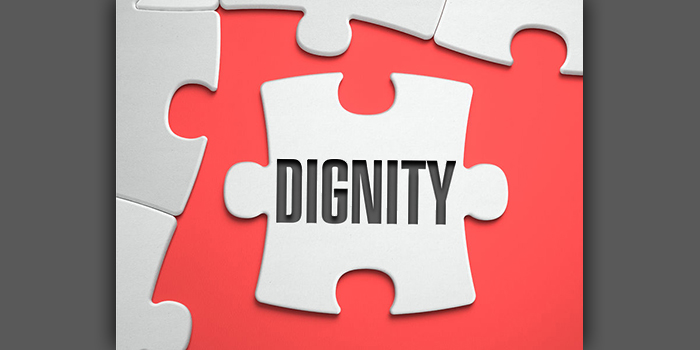 I had never heard of Donna Hicks. Nor had I read her acclaimed book “Leading with Dignity — How to Create a Culture That Brings Out the Best in People.” I came upon her TED talk by chance. I’m glad I did and want to share her wisdom with you.
I had never heard of Donna Hicks. Nor had I read her acclaimed book “Leading with Dignity — How to Create a Culture That Brings Out the Best in People.” I came upon her TED talk by chance. I’m glad I did and want to share her wisdom with you.
Dr. Hicks is an Associate of the Weatherhead Center for International Affairs at Harvard University. For many years she has concentrated on global conflict resolution. In the past decade work was specifically around the topic of dignity. She came to this area after witnessing opposing parties struggling to come to an agreement. She realized it was because each side failed to appreciate, or address, what Dr. Hicks refers to as, “the issue under the table.” That issue, she believes, is a lack or loss of dignity among participants. It was the primary reason they could not move forward.
Dignity is about the way we treat and value others. It inherently recognizes the humanity, worthiness, and worth of the person. It makes individuals feel they matter. It is fair. When violated, it manifests both physically and emotionally. A lack or the loss of dignity makes us feel violated, angry, resentful. It hardens us to others and options.
The lack of dignity, sometimes called respect, in the workplace is the most prevalent negative behavior by supervisors. According to a study by sociologist Andrew Sayer, 54% percent of 20,000 employees surveyed reported the absence of dignity. Employees stated these attitudes and actions impacted their physical and emotional health as well as their level of job satisfaction.
The most blatant violations of dignity are bullying, harassment, and sexual harassment. While these are serious issues, they are far from the most common and not the only ones that hurt the individual, working relationships, and the culture of the organization.
Hicks identifies acceptance, recognition of uniqueness, acknowledgement, a sense of inclusion, independence, safety/security, fairness, giving benefit of the doubt, space and accountability as the essential elements of a workplace culture demonstrating dignity. When a work environment is littered with dismissive or degrading behavior on the part of the leadership, employees are diminished, neglected, or ignored. Any gained trust disappears and can only be recovered when a new space is created where everyone has a say, feels safe and valued. For this to happen leaders must be willing and able to be vulnerable — listening to those who may not agree, may not hold their title, or question their decisions or behavior. They must involve people in the decision making, respect individuality, and let employees do it their way for a change. For many leaders this is too much to ask or not a priority.
Sayer talks about the independence and interdependence of the workplace culture, how it builds trust and allows for individuals to be recognized and achieve self-mastery. Compelling and wise insights that are easy to understand yet require dedication and diligence.
I expect most of us have experienced a lack or loss of dignity in the place we work. I know I have. It’s too bad, for the rewards are many and the path is quite straightforward. All it takes is the acknowledgement it exists and commitment to change.
Just a thought.
Leave a Reply